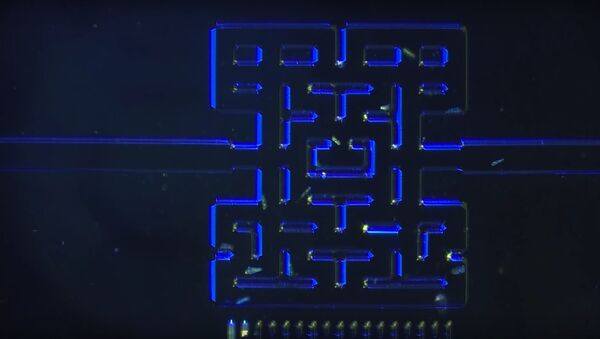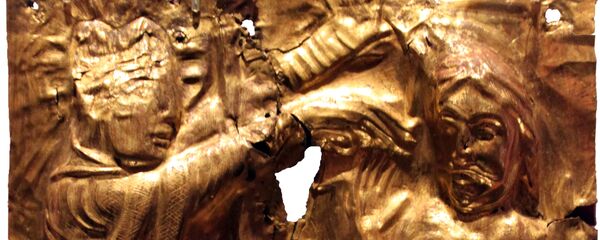The unicellular species euglena and ciliates play the roles of Pac-Man, whereas multicellular rotifers act as "Ghosts," who prey on Pac-Man. The aim of the study was to find out how euglena react to life-or-death situations when chased by rotifers in a three-dimensional area. In nature, all of the microorganisms are found in large numbers in fresh and salt water; many live in quiet inland waters where their presence is marked by green and red layers.
Using micro scenography, filmmaker Adam Bartley illuminated the maze in the neon colors familiar from the original edition of Pac-Man and captured the seeming gameplay between the euglena and the rotifers on film to make it more accessible to the public.
Scientists recreated #PacMan in real life, using microorganisms: https://t.co/AymeT2IaAs pic.twitter.com/eR7fpPhn8A
— The Mary Sue (@TheMarySue) July 5, 2016
"We did this because we wanted to raise awareness in the field. The main purpose of the project is to show how micro and nano system technology may be used to create a three-dimensional environment that can provide for more natural single- and multi-celled animal behavior under the microscope for further study," Johannesen explained.
By the scientists' own admission, the Pac-Man project not only helped the Norwegian team with their research, but also bridged their findings with the gaming and entertainment industry in order to present the research in a way normal people can understand. At present, researchers are looking forward to integrating other games in their work.
)#Pacman.(not Pacgirl pic.twitter.com/hYVICBAsyz
— Henriette A-Cigaan (@SibylleStoa) June 23, 2016




